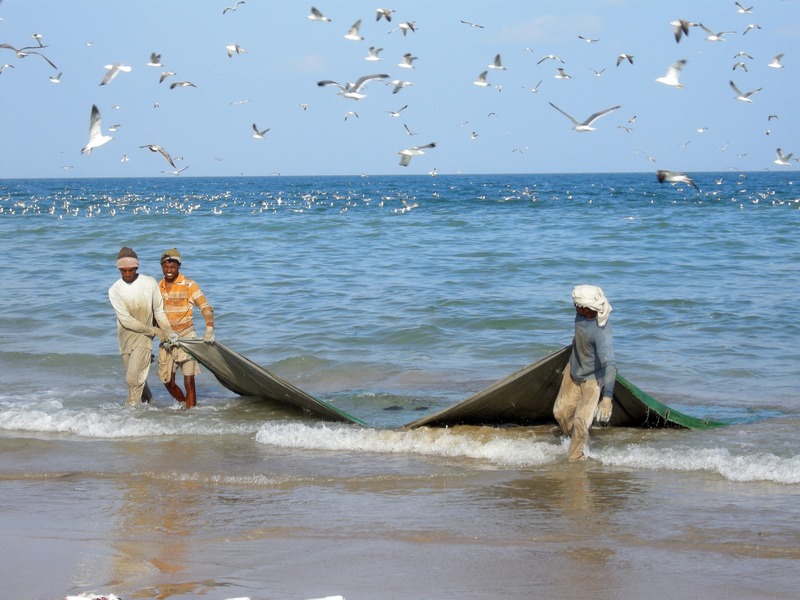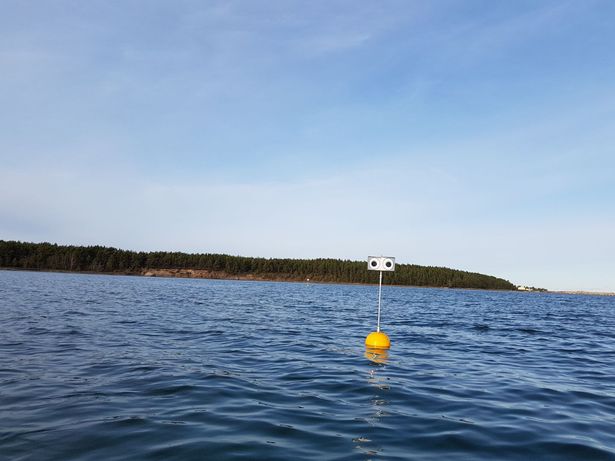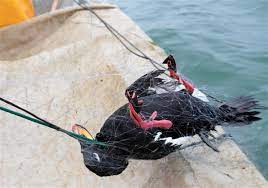 Fishing nets, unfortunately, do not catch fish alone... a number of seabirds are unintentionally caught by fishing nets.
Fishing nets, unfortunately, do not catch fish alone... a number of seabirds are unintentionally caught by fishing nets.
This has led to some seabird species becoming endangered or on the very brink of extinction. When seabirds hunt for food, or in this case, fish, in the water, they are unaware of the fishing nets below the surface and get caught in them.
Recently, scientists have created a floating buoy with googly eyes! Buoys are objects that float on water to mark reefs, hazards, locations, etc. Let's find out more about how these buoys might help save birds.
Dangers Seabirds Face
Seabirds rely heavily on fish as a source of food. When a number of fish are caught in fishing nets, seabirds can smell the fish from a huge distance away and eventually dive into the water to capture the fish.
Unfortunately, the seabirds get tangled up in the fishing nets, drown, and then die. Researchers found that gillnetting, a method used where a net is vertically dropped into the water and is almost invisible, is the most dangerous type of fishing net. It is responsible for killing at least 400,000 seabirds every year.
In 2018, researchers, scientists, and engineers from BirdLife International began brainstorming ways to prevent birds from going near areas with gillnets. BirdLife International is an organization that works toward supporting birds and conserving their habitats.
A Creative Solution!
 Researchers realized that many seabirds tend to avoid eye contact, especially with predators, and travel away from the predator or threat. So, they came up with the idea of attaching big googly eyes to buoys, making them so large that even seabirds with poor vision can spot the eyes.
Researchers realized that many seabirds tend to avoid eye contact, especially with predators, and travel away from the predator or threat. So, they came up with the idea of attaching big googly eyes to buoys, making them so large that even seabirds with poor vision can spot the eyes.
In addition, the scientists even thought to make the eyes sway back and forth, catching the attention of birds coming from all directions, and scaring them away.
BirdLife International then partnered with the Estonian Ornithological Society, as well as engineers from Fishtek Marine, to actually bring this device to life. Once the prototype was built, it was tested on the waters of Küdema Bay in Estonia for 250 hours to see if the nearby long-tailed ducks would be deterred.
The results showed that the looming-eye buoys successfully scared off around 20% to 30% of ducks within a 165-foot distance. In other locations where these buoys were tested, it was discovered that the seabirds were less likely to revisit the location to fish even three weeks after the buoys were removed.
Challenges
 Though the experiment showed success and hope, scientists have noted that this new type of buoy won’t have permanent effects on every species of seabirds. Some may decide to eventually return to a location to fish, or some won’t feel as threatened in the first place.
Though the experiment showed success and hope, scientists have noted that this new type of buoy won’t have permanent effects on every species of seabirds. Some may decide to eventually return to a location to fish, or some won’t feel as threatened in the first place.
Additionally, these looming-eye buoys are only a small step toward saving birds from extinction, according to scientists and researchers. While this invention has had positive impacts so far, the number of seabirds dying from fishing nets is still occurring on a large scale.
Scientists hope that eventually, they will be able to build smaller and more portable versions of the looming-eye buoy to make it more accessible and convenient to use. Even though there’s still a long way to go to help these suffering seabirds, at least scientists have made progress and taken steps toward positive change.
Sources: Guardian, NY Times, Phys.org, NewScientist







